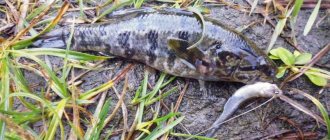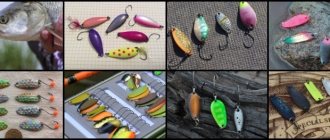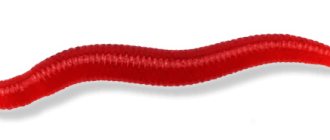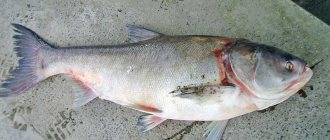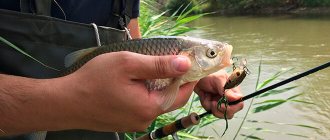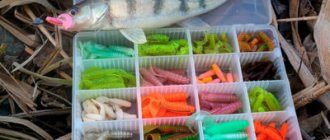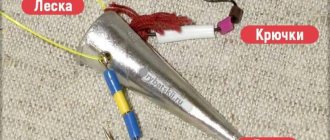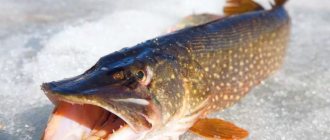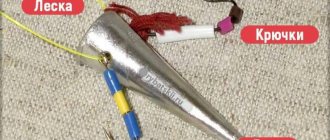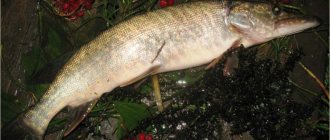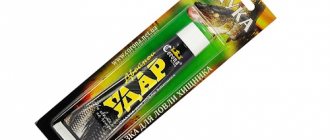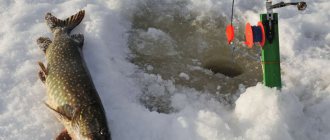Silicone baits appeared in fishing stores in the middle of the last century. This is an artificial bait for fishing that imitates live bait. Since their appearance, they have not yet lost their popularity. The creators of such baits are constantly coming up with new forms of bait, silicone compositions and flavors for it. Due to their low cost and wide variety, artificial baits make it possible to experiment when fishing in order to find the most catchy option for a particular body of water. An important factor when catching fish is not only the choice of silicone, but also the method of its attachment. How to put a silicone bait on a hook will be discussed below.
Types of silicone baits
A person who decides to try fishing with artificial bait for the first time first of all faces the question of choosing silicone. Since the appearance of this type of gear in stores, manufacturers have managed to come up with a large number of products of various shapes and purposes. In order not to get confused when choosing, first understand what silicone baits generally are.
Silicone baits
Twister
A very popular type of nozzle. It belongs to active baits, since when retrieved slowly its game is weak and inexpressive. With a moderately fast retrieve, its tail makes rapid oscillatory movements with a large amplitude, which attracts the attention of fish, especially pike, pike perch and other fast predators. The surface of the main “body” is most often ribbed, but can also be smooth. The rounded tail is made of dense silicone.
The twisters themselves are also divided into several types, but to understand the overall picture, it is enough to know that regardless of the type, this type of gear is used for catching active fish.
Twisters work well in overgrown ponds.
Twister
Vibrotail
It is almost the exact opposite of a twister. It has the shape of a small fish. The tail is flat, located perpendicular to the longitudinal axis. The wide end of the tail is also called a “penny”. The nickel makes you oscillate in the water. Unlike a twister, a vibrating tail oscillates faster, but with a smaller amplitude. Such movements are suitable for fishing in the cold season. This type is mainly preferred by perch. The body of the gear is most often made of silicone, but there are also options made of soft plastics and other elastic polymers.
The main thing in a vibrating tail, as in any other artificial one, is the preservation of elastic properties at low (less than ten degrees) temperatures.
Vibrotail
Slugs
Unlike the first two types, slugs are passive products. They do not have playing elements that can attract fish. Only an experienced fisherman can set the correct animation for the slug's movements. Although this type of tackle is not popular in fishing circles, professionals have long realized that the slug has great potential. The lack of playing elements is a minus only at first glance. After all, with this kind of fishing, the fisherman himself sets the game. If you want to catch an active pike, the game should be jerky and fast. If you need to stir up a sleeping perch, you can try to start the game slowly, gradually speeding it up with each new retrieve.
Properly done wiring will make the fish bite not because of hunger, but simply because the tackle flashing before its eyes will simply get boring.
The variety of play styles is the main advantage of slugs.
Slug
Silicone worms
Silicone tackle that imitates the shape of a worm. Manufacturers often add worm pheromones to silicone so that the tackle emits a pleasant smell for the fish. Silicone worms can be used for winter (ice) fishing. For lovers of active baits, there are products with curled tails.
Silicone worms
Creatures
Lures of various shapes and sizes. They imitate various existing and non-existent sea creatures. A large number of different appendages, paws and tails and fins divided into several parts give each product a special play. Creatures are used as the last opportunity to interest the most bored fish.
It is better not to choose them as the main tackle, since their bright appearance, often accompanied by an unusual smell, can simply scare away cautious fish.
Creatures
Octopuses
In part, this is a type of creature. Imitate the appearance of squid or octopus. Octopuses have a torpedo-shaped body. From the “Head” of the tackle there are a large number of thin strips that resemble tentacles. In the aquatic environment, with careful play, they behave smoothly and naturally, without causing rejection in cautious fish.
Octopuses
Natural baits
Natural baits are divided into baits (of plant origin) and bait (of animal origin). First of all, the success of fishing depends on the choice of the bait itself, the ability to prepare it, keep it in proper condition, and also use it correctly.
There are nozzles: single-component and combined.
Animal origin:
- worm
- maggot
- bloodworm
- insect larvae
- insects
- live bait (sprat, crucian carp, bleak, verkhovka), size depends on the size of the expected catch
- corn is an excellent bait for large peaceful fish
Plant origin:
- flour or bread dough
- peas, mastyrka (a symbiosis of pea flour and semolina, as well as various food additives - sugar, honey, flour and flavorings)
- mamalyga - corn porridge
- various cereals and plant seeds
- crumb of bread
- Potato
- corn and green peas
- Cake
- boilies - flavored balls of different colors and sizes for catching carp and other large fish
- dry dog or cat food
It has been noticed that fish bite better on bait of animal origin in cold periods of the year (spring, autumn), we do not take into account the winter period. While the demand for plant baits is better on summer days. This is due to the change with the transition of fish to plant foods in summer days: mainly algae.
Difference in colors
When choosing artificial bait, you should rely not only on the shape, but also on the color of the product. It can be anything, but basically all colors are divided into natural and “acid”. Natural colors include nondescript, dark tones.
Among natural colors, the “machine oil” color is very common, based on brown with a red or green tint.
Products of natural color are best used in clean water, where they will be clearly visible.
“Acid” colors include bright shades of any color: red, yellow, lime, purple.
But the most catchy one, according to most anglers, is the bright pink one. Despite its maximum unnaturalness, it shows excellent results compared to other colors, especially in turbid water.
Of course, there is no universal color that will work well everywhere. It all depends on the fish. The two listed examples are simply the most striking and popular representatives.
Color characteristics also include the presence of sparkles and glow in the dark. Both of these elements have a good effect on catching predators.
Size difference
Artificial baits typically range in size from 1 to 5 inches. The choice of size directly determines the catch. If you choose a small twister one inch long, then small and medium-sized perch will readily bite on it. But pike can bypass such a “booger”. Conversely, products measuring 3 inches or larger will scare off a small predator, but will interest adult individuals.
So, we can say that the choice of size depends on what the fisherman is after - quantity or quality.
Lures of different sizes
Natural baits for fishing
Natural fishing baits include natural food items of animal origin that are included in the daily diet of fish. This type of bait can be used all year round. The intensity of the bite increases at moments of natural increase in the volume of the food item due to the seasonality of its reproduction. The most popular and well-known types of bait are presented below in a broader perspective.
Worm
The worm is undoubtedly the most common and well-known bait for catching fish. Worms are associated with the classics of fishing for peaceful fish species. For fishing they use dung, earthen, rain, marsh, leaf worms, as well as crawling worms. You can get a worm in natural conditions, in its natural habitat, or you can successfully breed it yourself at home. The bait is distinguished by simple storage methods for a long time.
Worms are suitable for catching both peaceful and predatory fish, regardless of the fishing season. The bait holds perfectly on the hooks, luring fish with its movements and smell. Pieces of worms are used as bait to catch small fish, single specimens of 5–7 cm are used to catch medium-sized fish, and a bunch of worms are used to catch large fish and predators.
Maggot
A maggot is the larva of a blowfly, adored, like worms, by most species of fish. You can breed maggots yourself in numerous and technologically simple ways, but it is easier to buy a portion of ready-made larvae in a fishing store for little money. Maggot is suitable for catching small and medium-sized prey. You can put one larva on a hook, or you can use a garland of larvae, combining maggots with other types of bait to get a sandwich. The maggot is stored in a cool place in sealed boxes with sawdust, without loss of condition, for a month.
Bloodworm
The bloodworm is another common larva in fishing, only this time it is a mosquito. Bloodworms are obtained from washed sludge raised from the bottom of a reservoir. The red larva is suitable for catching small fish throughout the year.
Important! Most often, the bait is formed from three or five larvae, putting them on a small-sized hook or jig with a so-called broom.
Bloodworm is a delicate bait that requires careful installation on hooks and special storage conditions. Store the bloodworms for two weeks on the bottom shelf of the refrigerator, wrapped in a damp cloth or paper.
Other
Among other common and well-known baits of animal origin, it is worth highlighting caddisfly or shitik, burdock worms, goose or dragonfly larva. Most insects living near the boundaries of a reservoir serve as effective bait for fish. In particular, grasshoppers, including locusts, honeydews, butterflies, dragonflies, flies and chafers, during mass emergence, are constantly the main food item for most fish species. The fisherman should not forget about such baits as the meat of snails and mollusks living in the reservoir, as well as leeches. To catch the predator, they use live bait, small fish, frogs and crayfish meat.
Types of installation of silicone baits
Once you are done with choosing and purchasing silicone for fishing, you can move on to collecting equipment. There are a lot of them, the most common ones will be given below, with step-by-step diagrams, as well as photo and video examples.
Attaching artificial bait to a jig head
To properly attach the jig head you need to perform the following steps:
- First, the jig head is simply applied to the tackle in order to roughly mark the point on the back where the hook tip will come out.
- A puncture is made in the “mouth” of the bait, and through this puncture the entire tackle is gradually placed on the hook (you need to carefully ensure that the shank runs exactly in the center to achieve a good, even game)
- The sting is brought to a predetermined place where it should come out, and brought out.
All that remains is to straighten the bait, and the equipment for the jig head is ready. For a clear example, you can see in the photo below or watch the following video:
Offset hook attachment
Attaching an offset hook is a bit like rigging a jig head. What is microjig? Most often, a “vibrating tail” type bait is put on the offset bait. To attach the tackle to the offset one, the following algorithm is performed:
- A puncture is made in the front of the bait and brought out after 0.5 centimeters.
- The silicone unfolds and moves along the hook all the way until it rests on its eye.
- After this, another puncture is made, this time in the belly of the bait. The point is brought out from the back and clings to it to reduce the chance of snagging on snags.
Instructions
The end of the hook may not be inserted into the back to increase the chance of successful hooking. But at the same time, the likelihood of getting caught on vegetation at the bottom or snags will increase.
A visual example of a nozzle:
Double hook rig
Large-sized silicone (from 3.5 inches) is usually placed on the doubles. With an increase in the number of hooks, the chance of hooking a predator increases, but at the same time the bait loses the ability to work well in overgrown reservoirs. In order to attach the tackle to a double hook you need:
- The double hook moves slightly apart to increase the gap between its two parts (the main thing is not to overdo it)
- The spreader tries on the tackle to determine the puncture site.
- A puncture is made on the side of the silicone, and the hook is pulled all the way to the end.
- After this, the ear is removed through the “mouth” of the product
It is important that the ends are as close to the back of the bait as possible. This will reduce the chance of snagging. Example video with a silicone attachment on a double hook:
Attaching artificial bait to a tee
The method is very similar to the double attachment. In exactly the same way as in the previous versions, first try on and make a hole on the side. A regular ballpoint pen is suitable for punching holes. After this, the eye of the hook is inserted into this hole and removed through the “mouth” of the fish. The hook must be inserted so that the two ends point upward.
Artificial bait on treble
A visual example of the nozzle:
Silicone worm attachment
The easiest way to rig. The product is simply pierced in the middle. To increase the durability of the worm, you can put a slightly compressive rubber ring on it and hook the hook onto it. As a result of such equipment, two ends are formed, which, hanging down, will play when retrieving, attracting fish.
Silicone worm
Texas rig type
In order to make a Texas-type rig, you will need an offset hook, a streamlined weight and the bait itself. First, the bait is placed on the offset so that the tip is necessarily inserted into the back. After this, a streamlined weight is attached to the eye. A leash is attached to the sinker, and the rig is ready. Due to the absence of protruding parts, this type of equipment can be conveniently fished in overgrown places.
Texas rig
Carolina rig
Just like the Texas rig, the Carolina rig is well suited for fishing in overgrown reservoirs. With the Carolina type of equipment, the leash, hook and bait itself are a continuation of the fishing line. First, silicone is put on so that during the second puncture the sting does not pierce through it. The tip seems to be hidden in the body of the bait. The hook itself is attached to the leash, and the leash is attached to the main fishing line. This creates a hanging end that will play when wiring.
The only problem with such equipment is that there is a chance of weak fish that are not able to bite through the silicone.
Carolina rig
Drop shot
A simple equipment, the type of application resembles a diverter leash. First, a hook is tied to the leash at an angle of 90 degrees so that about 15 centimeters of fishing line remain (preferably more, the excess can be cut off). A weight is attached to the end of the fishing line, and artificial bait is put on the hook. The drop shot is ready.
Drop shot
Hinged mounting
Hinged mounting, or “Cheburashka”, gives more freedom to the bait when playing. It is named so because the sinker has two ears located at an angle of 90 degrees. A hook with attached bait is attached to one eye through a swivel, and the end of the leash is tied to the other. The hook on the swivel will move freely, creating additional vibrations that will attract fish.
Hinged equipment
Artificial baits
Artificial baits are used to catch predatory fish: pike perch, perch, pike and other species. A predatory fish, at the level of instinct, grabs a moving bait out of hunger, simply either reacting to movement or defending its territory.
Lures are made from various materials. It can be plastic, metal, rubber, wood, fur or feathers, equipped with a large single hook, tee or several tees.
How the artificial bait will work depends on the fishing tactics. It can either submerge in water or remain floating on the surface. Some types of baits have built-in metal or plastic blades that allow them to sink into the water. Artificial lures are designed to sink slowly or quickly into the water, vibrate, swirl, rotate or oscillate.
Each bait is unique, has a unique effect and performs its own specific functions.
For peaceful fish:
- artificial bloodworm
- artificial maggot
- loose bait
- artificial worm
- mixes, additives, liquids
- pellets, appetite stimulants
- attractants, flavors, bite activator
- foam balls
- artificial attachments, dyes
- natural oils, pastes
Peaceful fish bite the worst on artificial baits. They are primarily guided by their sense of smell and practically do not react to the movement of the bait. Therefore, the proposed baits and baits must be scented.
Adviсe
- In order not to be afraid of ruining expensive silicone with the wrong attachment, you can buy a package of the cheapest “rubber” and practice on it. It's not such a shame to ruin it. Once you have confidence, you can move on to using a good silicone nozzle.
- You should not buy bait in a single copy. A situation may arise when one of them begins to work very successfully in a particular place, and if it is damaged, it will no longer be possible to replace it with the same bait. This can greatly ruin your mood and your catch.
